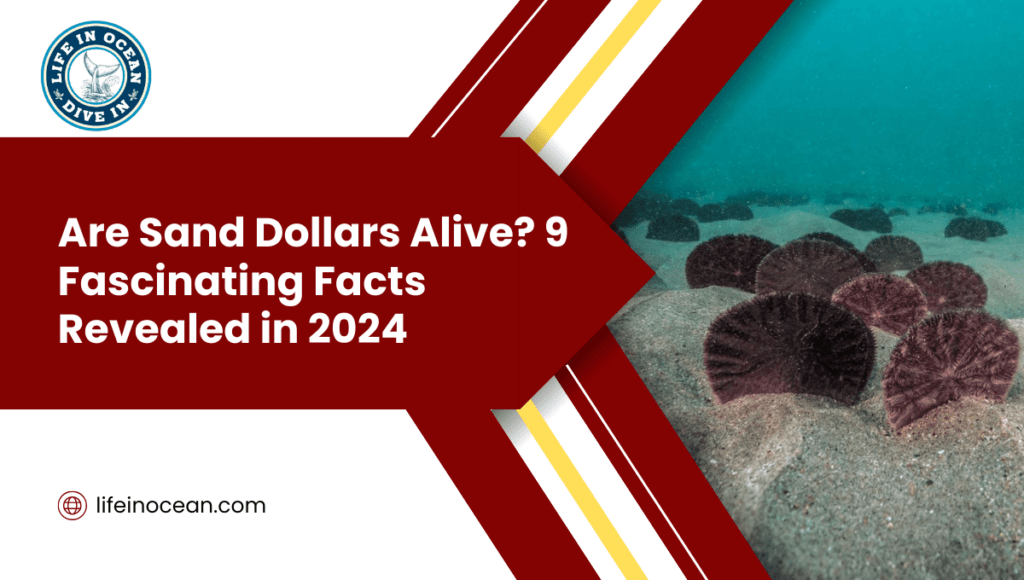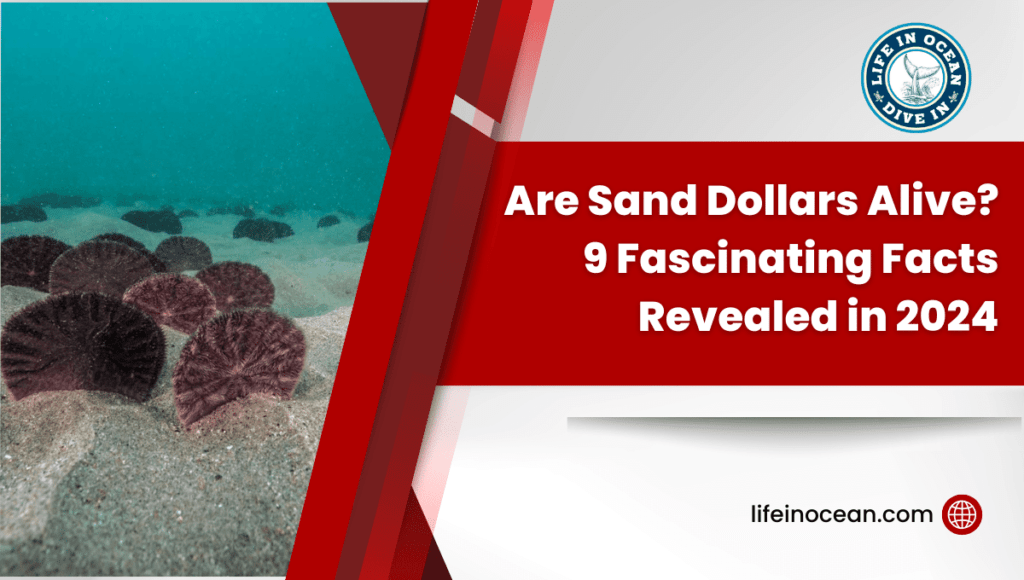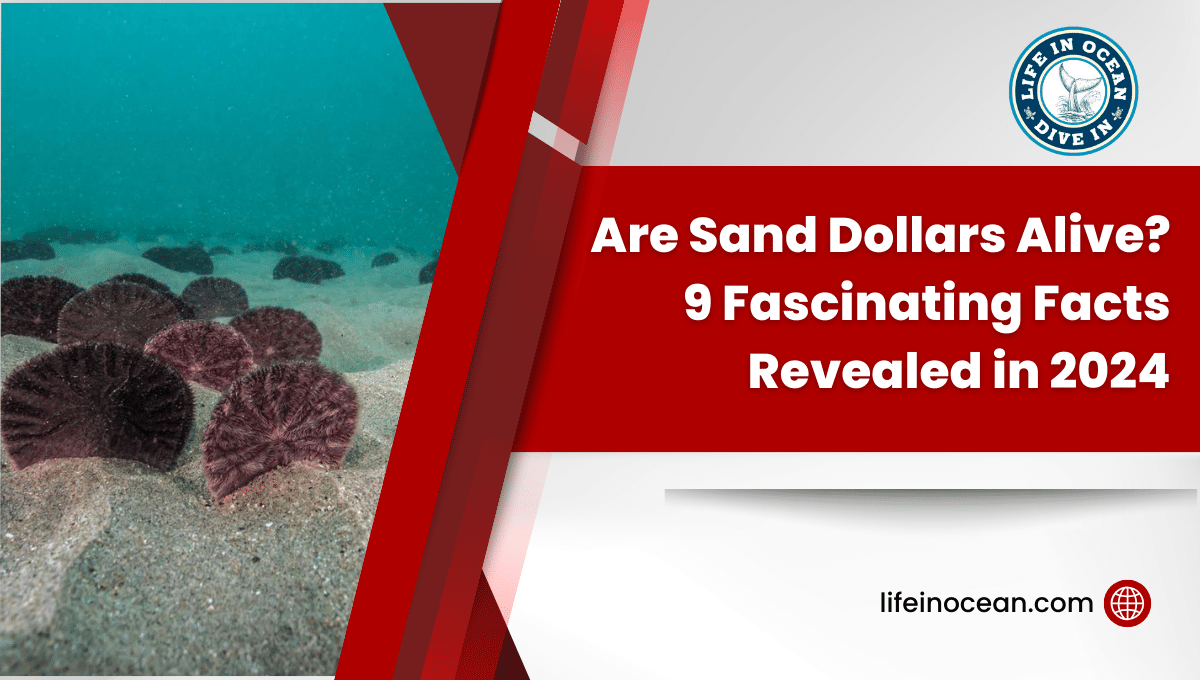“Life is a journey through the waters, not a destination. It can take minutes or a lot of time to find different ways to navigate through the challenges we face.” – Ralph Waldo Emerson
Sand dollars, those enigmatic creatures that grace the sandy shores of beaches worldwide, along with shells and sea cucumbers, hold within them a world of wonder in the marine ecosystem of the oceans. Belonging to the echinoderm family and closely related to sea urchins and starfish, these fascinating sand dollar fossils have captivated beachgoers on sandy seafloors for generations. Whether on a shelling tour or simply strolling along the beach, spotting a dead sand dollar can be a thrilling find. Sand dollars are often collected as cherished beach souvenirs, providing a unique way to remember a tour of the marine ecosystem.
But there is so much more to these seemingly simple creatures than meets the eye. From their intricate reproductive processes to their remarkable ability to undergo rapid changes in response to environmental cues, we’ll uncover the hidden facts that make them truly extraordinary.
Join us on this captivating tour as we venture into the mysterious world of sand dollars and discover what lies at the heart of these captivating ocean dwellers.
Table of Contents
Sand Dollar Anatomy: What Is Inside a Sand Dollar?
Inside a sand dollar, there’s a whole world of fascinating organs and structures. Let’s take a closer look at what you can find inside these intriguing creatures.
Complex System of Organs
A sand dollar may appear simple from the outside, but inside, it houses a complex system of organs that allow it to survive and thrive in its marine environment. One of the most important organs is its mouth, which is located on the underside of the body. This mouth is equipped with small spines called dental papillae, which help the sand dollar capture and consume its food.
Tiny Spines for Movement and Feeding
The top surface of a sand dollar is covered with an array of tiny spines known as cilia. These spines serve multiple purposes for the sand dollar. Firstly, they aid in movement by allowing the creature to glide across the ocean floor using a rhythmic motion. Secondly, these cilia play a crucial role in capturing food particles from the water. As water passes over them, they create currents that draw in microscopic organisms for the sand dollar to feed on.
Pores for Respiration and Movement
On the bottom surface of a sand dollar, you’ll find an intricate network of small pores. These pores are responsible for two essential functions: respiration and movement. Water enters through these pores and circulates throughout the interior body cavity, providing oxygen to vital organs such as the respiratory tree.

The respiratory tree is another remarkable feature found inside a sand dollar. It consists of delicate branching tubes that extract oxygen from water passing through them. This system enables efficient gas exchange within their bodies.
Reproductive Organs for Propagation
Sand dollars also possess reproductive organs necessary for their propagation. They have both male and female gonads within their bodies, allowing them to reproduce sexually by releasing eggs and sperm into the water column during spawning events. Fertilization occurs externally, and the resulting larvae undergo a series of transformations before settling on the ocean floor and developing into adult sand dollars.
Sand Dollar Fossils: A Glimpse into the Past
They provide us with a unique opportunity to study their anatomy from long-extinct species. Fossilized sand dollars offer valuable insights into the evolutionary history and development of these fascinating creatures. By examining ancient sand dollar fossils, scientists can better understand how these organisms have adapted and changed over millions of years.
Identifying Live Sand Dollars: How can you tell if a sand dollar is alive?
To determine if a sand dollar is alive, there are a few key indicators to look out for. Live sand dollars possess tiny hair-like structures known as tube feet that assist them in moving along the ocean floor. When you come into contact with or gently flip over a live sand dollar, it will respond by shifting its spines or tube feet.
Tube Feet: The Sign of Life
Sand dollars have tube feet that help them move and find food. If the tube feet are moving, it means the sand dollar is alive. Look closely to see them because they can be hard to spot.
Responsive Movement: A Clear Indicator
You can tell if a sand dollar is alive by touching it or flipping it over. Live sand dollars will react when you do this. They might move their spines or tube feet. This is how they protect themselves from danger. If you see any movement, it means the sand dollar is alive.
Color Variation: Dead vs. Live
The color of a sand dollar can tell us if it is alive or dead. Dead ones look white or pale because they have been in the sun and air after washing up on the shore. But live ones have a grayish or brownish color because they have a thin layer of skin that protects them. As a sand dollar dies, this skin fades away and it looks bleached.
Appearance of Sand Dollars: What Does a Sand Dollar Look Like?
Sand dollars are fascinating creatures that can be found along sandy beaches. They have a unique appearance that sets them apart from other marine life. Let’s take a closer look at what sand dollars actually look like.
Circular Shape with Radiating Patterns
A typical sand dollar has a circular shape, resembling a flattened disc. Imagine a small pancake or a round cookie. This distinctive shape is one of the key characteristics of these intriguing creatures.
From the center of the sand dollar, you’ll notice five petal-like patterns radiating outwards. These patterns create an intricate design on the surface of the sand dollar, giving it an aesthetically pleasing appearance.
Size Variations
Sand dollars come in various sizes, ranging from less than an inch to about four inches in diameter. While some may be as small as a pebble you can hold in your hand, others can be as large as your palm.
The size of sand dollars often depends on their age and species. Younger individuals tend to be smaller, while older ones grow larger over time. So, if you stumble upon multiple sand dollars during your beachcombing adventures, don’t be surprised by their size differences.
Colorful Exoskeleton
Sand dollars exhibit different hues depending on their species and habitat.
In general, their exoskeletons range from light tan to dark purple shades. You might come across sand dollars with pale yellow or brownish tones too. The color variation adds visual interest and makes each sand dollar unique in its own way.
It’s worth noting that the coloration might change slightly when they are alive compared to when they wash up on shore after death. Live sand dollars typically have more vibrant colors due to the presence of tiny spines and cilia covering their bodies.
The Life of a Sand Dollar: The Living Sand Dollar
Sand dollars are fascinating creatures that have an interesting life cycle. Let’s explore the journey of a sand dollar from its early stages as larvae to its adulthood as a living sand dollar.
Floating Larvae Settle on the Seabed
Sand dollars begin their lives as tiny larvae floating in the vast ocean. These larvae are carried by currents until they find a suitable spot to settle on the seabed. Once they find their ideal location, they dig themselves into the sandy ocean floor.
Feeding Habits of Sand Dollars
To survive and grow, sand dollars need to eat. They have specialized feeding appendages called spines that help them gather food particles from their surroundings. Sand dollars primarily feed on microscopic algae and organic matter present in the water column or within the sediment.
Their spines act like tiny arms, constantly moving and collecting food particles. They use these spines to transport the collected food towards their central mouth located on their underside. It’s quite impressive how these little creatures manage to sustain themselves!
Metamorphosis: From Larvae to Adults
As sand dollars mature, they undergo metamorphosis, transforming into adults with distinct body structures. During this process, their bodies change dramatically. They develop a hard exoskeleton known as a test, which is covered in small spines.
The test provides protection and support for the sand dollar’s internal organs. Over time, these spines become more pronounced and form intricate patterns that we commonly associate with sand dollars.
Interactions with Other Marine Life
Sand dollars share their habitat with various other marine organisms such as sea urchins, crabs, sea stars, and sea cucumbers. These creatures play important roles in maintaining ecological balance within their ecosystem.
Some animals may prey upon sand dollars for food or use them as shelter. For example, certain species of crabs and sea stars feed on sand dollars, while others may seek refuge in the nooks and crannies of their exoskeletons.
The Sand Dollar’s Role in the Beach Ecosystem
Sand dollars are not only fascinating creatures but also play a vital role in the beach ecosystem. As they feed on organic matter, they help to recycle nutrients within the ocean floor. Their presence contributes to a healthy balance in the marine environment.

When sand dollars die, their skeletons wash ashore and become part of the sandy beach landscape. These sun-bleached remnants are often collected by beachcombers and serve as beautiful souvenirs of coastal adventures.
Structure of a Sand Dollar: The Sand Dollar Skeleton
The sand dollar has a special skeleton made of plates that are connected together. These plates are strong and rigid because they are made of calcium carbonate. But what’s cool is that the skeleton can also bend and move because of the flexible tissue that holds the plates together. This flexible skeleton helps the sand dollar do different things. It can change its shape to burrow into the sand or protect itself from enemies. The skeleton acts like armor, keeping the sand dollar’s important organs safe from harm.
The sand dollar’s skeleton is really strong because of how the plates are connected. It stays in shape even when there is pressure from the water or other things around it. The sand dollar’s skeleton is an amazing example of how creatures adapt to survive in their environment. The way the plates are arranged helps the sand dollar move through the sand easily. The skeleton also has tiny spines that help the sand dollar find food and bring it to its mouth.
Role in the Ecosystem: Sand Dollars and the Ecosystem
Sand dollars are more than just pretty shells you find on the beach. These creatures play a vital role in maintaining healthy coastal ecosystems. Let’s explore how sand dollars contribute to the balance of marine ecosystems and why they are so important.
Filtering Sediments and Recycling Nutrients
One of the key roles sand dollars play in the ecosystem is filtering sediments and recycling nutrients. As these flat, round creatures burrow into the sandy seafloor, they constantly sift through sediment particles using their tiny tube feet. This process helps to aerate and clean the sediment, removing excess organic matter and preventing it from accumulating.
By filtering sediments, sand dollars help maintain water clarity, which is crucial for other marine organisms that rely on sunlight for photosynthesis. As sand dollars consume organic matter, they break it down into smaller particles that can be easily absorbed by bacteria and other microorganisms. These organisms then convert these nutrients into forms that can be utilized by other marine life.
Controlling Algae Populations
Algae growth can sometimes get out of control in marine ecosystems, leading to harmful algal blooms. Sand dollars help prevent excessive algae growth by grazing on them. They use their specialized mouthparts to scrape algae off rocks or other surfaces.
This grazing behavior helps keep algae populations in check, ensuring a healthy balance in the ecosystem. Excessive algae growth not only blocks sunlight but also depletes oxygen levels when it decomposes, causing harm to other marine organisms such as fish and shellfish.
Providing Habitat for Small Organisms
Sand dollars serve as natural habitats for various small organisms living within coastal ecosystems. The spaces between their spines provide shelter and protection from predators like crabs and fish.
These small organisms often attach themselves to the sand dollar’s body or live within its spines. In return, they benefit from the sand dollar’s protective cover and access to food particles that the sand dollar filters from the water.
Value of Sand Dollars: How Much Is a Sand Dollar Worth?
Sand dollars aren’t money like dollar bills or coins. But they’re valuable because they’re pretty and unique. They have a cool shape and design, and they’re part of the echinoderm family. You can find them in sandy ocean places. They have a soft covering called a test that protects their bodies. The test has spines and a flower-like pattern. You can’t take live sand dollars from some places, but you can find dead ones on the beach. People collect them as souvenirs or use them for crafts. Some people make jewelry or decorations with them.
Others just put them in their homes. When sand dollars die, they change color. They start dark brown but get lighter over time because of sunlight and air. This makes them even more unique. Remember to be responsible and ethical when collecting sand dollars. If you do take them from the beach, make sure they’re already dead. Live sand dollars are important for the environment because they filter sediment and provide homes for other sea creatures.
Some collectors might pay more for rare or well-preserved sand dollars. Things like size, color, symmetry, and condition can affect their value. If you want to know how much a sand dollar could be worth if you sold it online or at a special store, prices can range from a few dollars to hundreds of dollars depending on those things I just mentioned. But remember, the value of a sand dollar is up to the person buying it.
Folklore and Legends Surrounding Sand Dollars: The Legend of the Sand Dollar and Other Folklore
Congratulations on finishing the sand dollar lessons! You now know all about their body and their role in nature. But before we finish, let’s talk about the cool stories and legends about sand dollars. The Legend of the Sand Dollar is an old story that people have been telling for a long time. Some say that sand dollars are like lost coins from mermaids or even from Atlantis. Finding a sand dollar is supposed to bring good luck and mean peace and love. And if you break one open, you might find five doves inside, which stand for faith, hope, love, happiness, and peace.

These stories might not be true, but they make sand dollars even more interesting. So next time you see one on the beach, take a moment to enjoy its beauty and think about the cool stories behind it. Now that you know so much about sand dollars – their body and their stories – why not go on your own beach adventure? Grab some sunscreen and look for these amazing creatures along the shore. Who knows what secrets they might hold or what stories they might inspire in you? So go ahead, explore nature and make your own tales to share with others. Have fun at the beach!
FAQs
What does a sand dollar look like when it’s alive?
When a sand dollar is alive, it looks quite different from the familiar white skeletons we often find washed up on the beach. Living sand dollars have a velvety texture and are covered in tiny, hair-like spines called cilia. These spines help them move and capture food particles in the water.
How can you tell if a sand dollar is alive or dead?
To determine if a sand dollar is alive or dead, gently pick it up and turn it over. If the underside has tiny moving spines or feels slightly sticky, then it’s likely still alive. Dead sand dollars, on the other hand, will be dry, brittle, and devoid of any movement.
Can you keep live sand dollars as pets?
While it may be tempting to bring home live sand dollars as pets, it’s important to remember that they are delicate creatures best left in their natural habitat. Sand dollars require specific conditions to thrive, including sandy bottoms and access to plankton for feeding. Attempting to keep them as pets usually leads to their demise.
Are there any dangers associated with handling live sand dollars?
Handling live sand dollars should be done with care to avoid causing harm to both yourself and these fragile creatures. Their spines can be sharp and may cause injury if mishandled. Excessive touching or disturbance can stress them out and disrupt their natural processes.
What should I do if I find a live sand dollar on the beach?
If you come across a live sand dollar during your beach stroll, consider yourself lucky! The best thing you can do is appreciate its beauty from afar without disturbing its environment or attempting to take it home. Snap some photos as a memento but leave it where you found it so that others can enjoy its presence too.
Remember: Let nature be nature!

